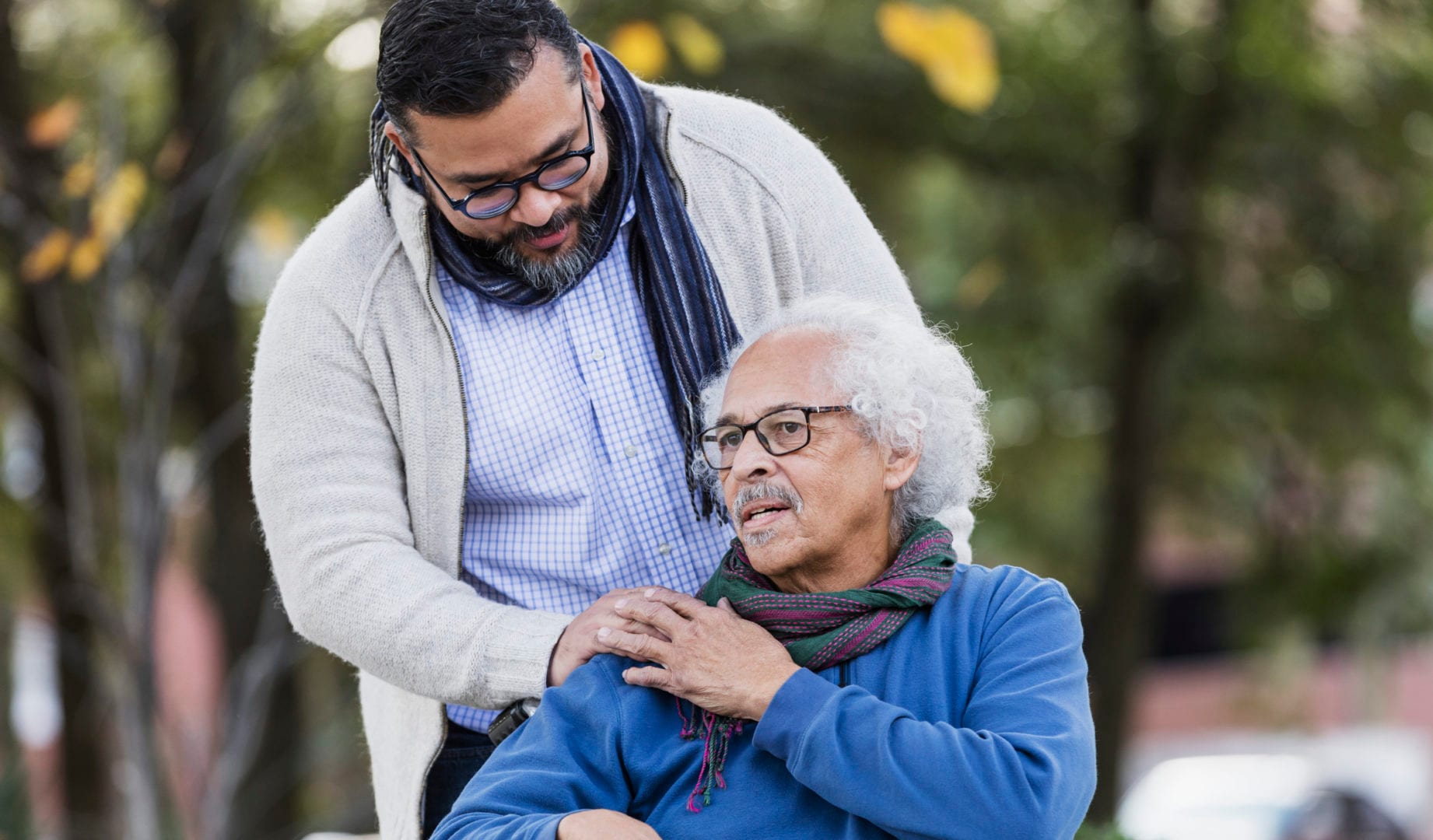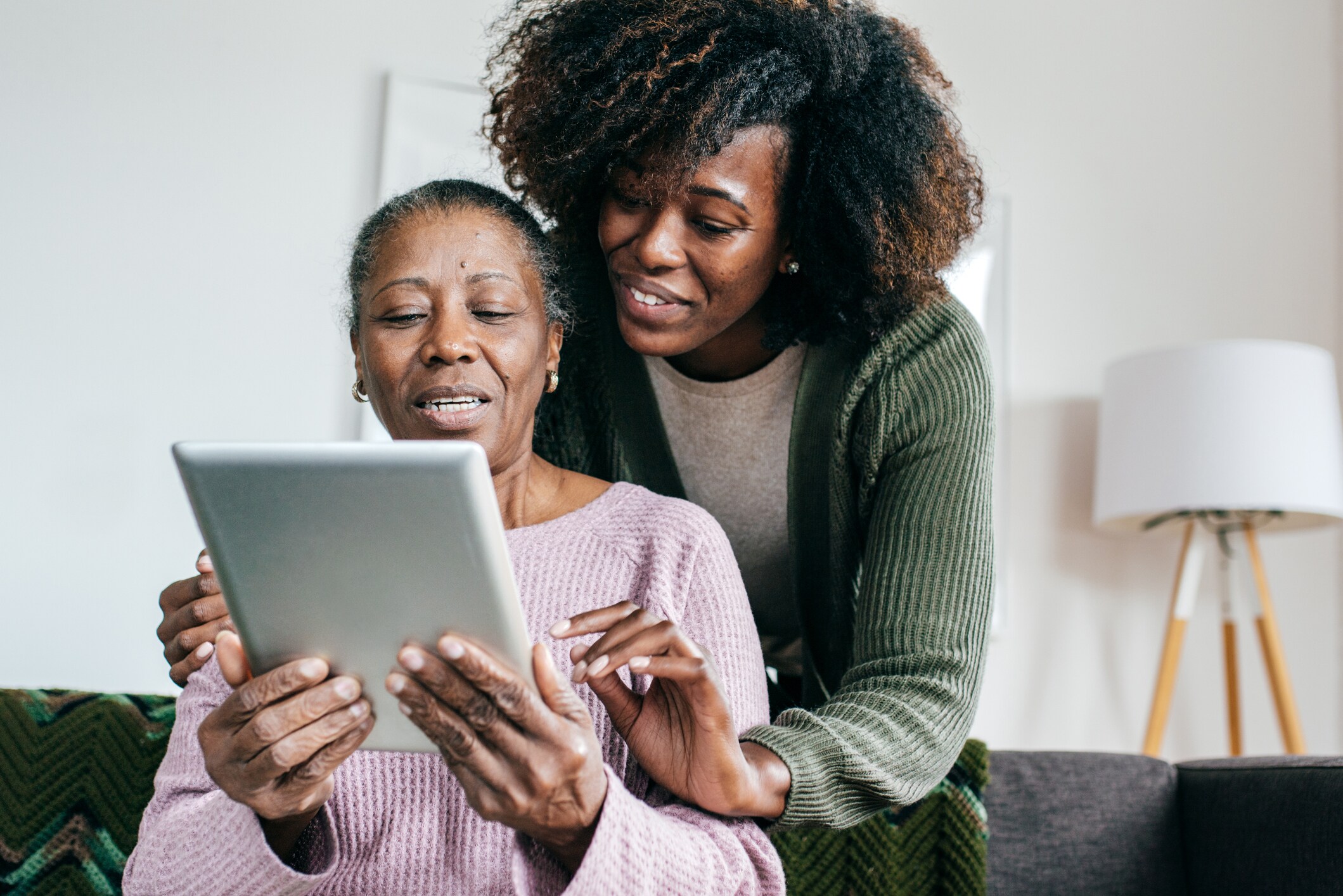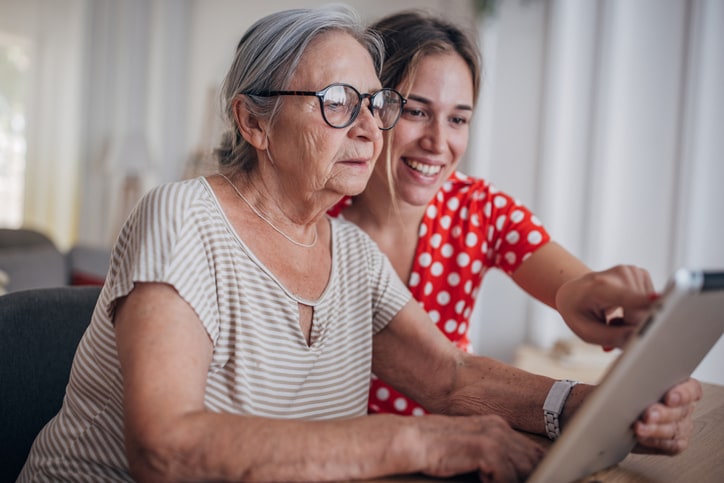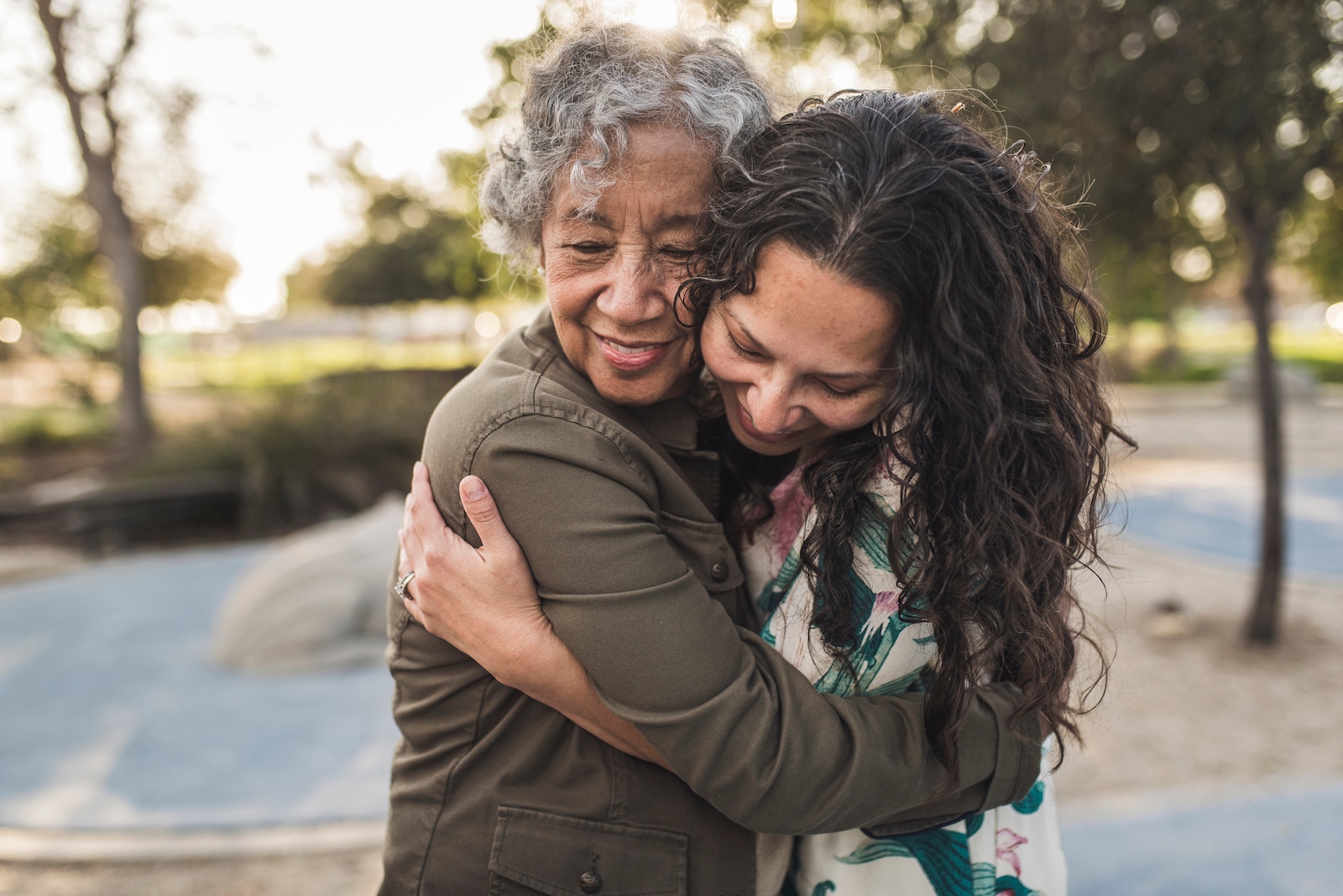We recently found out that my mother-in-law has mild cognitive impairment. As she deals with memory issues related to the condition, my father-in-law, husband and sister-in-law have taken on her primary caregiving duties. We all live close by, and I want to be as involved and supportive as I can be — while also respecting them and understanding that they are the main decision-makers. I’m in a similar place, more of a secondary caregiving role, with my grandmothers, who are both in their 80s. Their children — my parents, aunts and uncle — are doing the bulk of the caregiving, but it’s important to me to help however I can. It’s a challenging position to be in.
“Being a secondary caregiver can be difficult because you may feel like you don’t have control of the situation in any direction,” explains Scott Williams, co-founder of Embracing Carers, an international initiative to support caregivers. “You’re not the primary caregiver, so you’re not making the day-to-day decisions that directly affect your loved one’s healthcare. But you also want to be as helpful as possible, so you’re looking for ways to contribute that will relieve the primary caregiver’s stress without accidentally creating more friction.”
Despite the struggles associated with secondary caregiving, its importance is twofold, according to Williams. Secondary caregivers can assist with hands-on caregiving, which helps the aging senior, as well as act as “the chief support system for a primary caregiver,” he says, which helps ensure the main caregiver doesn’t become overwhelmed or burnt out.
“Caregiving is a team effort, and the more adaptable your team is, the better it is for both the caregivers themselves and for the cared-for person who is relying on them,” he says.
Read on for ways to navigate secondary caregiving.
1. Get specific about your role
“Have an open and honest conversation with the primary caregiver — and any other secondary caregivers — to figure out individual roles,” advises Monica Moore, community health program manager and co-director, training and education activities at the Mary S. Easton Center for Alzheimer’s Disease Research at UCLA. “See what is truly needed and realize that there will be times when the lines blur, but the goal should always remain the care and safety of the person in need.”
Similarly, Rebecca Axline, a supervisory clinical social worker at Houston Methodist Neurological Institute in Houston says it’s smart to determine in advance which decisions a secondary caregiver can make on their own while caregiving (like a mealtime) and which require an OK from the primary (like a big purchase). “Even when formal discussion takes place, there will likely be ‘out of the box’ events, and a discussion about how much autonomy the secondary caregiver has is important,” she says.
Also, consider your own relationship with the primary caregiver. “If you have always had a terse relationship with the primary caregiver, do you want to enter into this role where you will have to support their decisions and interact with them, or is it best to let them be the primary caregiver and you assist when asked?” says Moore. “There are many layers to all relationships, and when the relationships are focused on caregiving, even more discussion and understanding needs to exist.”
2. Offer support
As Williams mentioned earlier, supporting the primary caregiver is key — and may be hands-on, emotional or both.
“My role was, first and foremost, to support my husband — in his relationship with his mom, in listening to his ideas and struggles and to help in ways that he needed it,” says Jessie Voigts, of Kalamazoo, Michigan, whose husband was the primary caregiver for his mother. “This might be that I helped bathe her, or that I was the person that handled all the paperwork in the ER.”
Deborah Harlow, an Embracing Carers ambassador, was a secondary caregiver for her grandparents, while her mother was the primary. “My mom relied on me being a safe haven for her to problem-solve, vent, be loved and supported emotionally,” she says.
That also included in-person help. When Harlow, who lived a couple of hours away, visited her mother and grandparents, she would run errands, cook, clean and was also available in emergencies and as back-up support. Later, when her mom became a live-in caregiver to her grandmother, Harlow would stay with her grandmother once or twice a year while her mom traveled and recharged, she says.
She calls being a secondary caregiver “essential to the flow and sustainability of the primary caregivers’ role,” she says.
3. Get specific with your offers to help
When offering help, Moore recommends sticking with concrete suggestions. Instead of “let me know if you ever need anything,” she says, offer to take the senior to lunch on Saturday, or to pick up essentials for the primary caregiver when going to the store.
Also try to anticipate what a primary caregiver might need in the future. “Finding ways to be helpful as a secondary caregiver sometimes means looking two steps ahead and trying to alleviate some of tomorrow’s challenges that the primary caregiver doesn’t have time to see today because they’re only focused on what your loved one needs right now,” says Williams.
4. If support isn’t wanted, don’t take it personally
“Many secondary caregivers feel rejected when they offer help, and it is not either needed or wanted,” explains Axline. Her advice: Address your own feelings of hurt, fear or sadness — and then, you might discover different ways to provide support, whether that’s having a meal delivered, sending a gift card to the primary caregiver or occasionally offering to do smaller tasks like walking the dog or driving to an appointment.
If they pass, try not to take it personally, Williams advises. Sometimes caregivers don’t want to seem incapable or needy or might not be ready to admit they need help.
5. Choose language carefully during disagreements
As a secondary caregiver, you might face disagreements or want to address difficult subjects — like getting professional help or end-of-life care. “If the role of secondary caregiver is established openly and in a non-judgmental way, questions or discussions about tough topics should be encouraged,” advises Moore.
Just be mindful of the language you’re choosing, as you don’t want to put the primary caregiver on the defensive from the get-go. “It is commonly suggested to use ‘I’ statements and not ‘you’ statements,” explains Moore. She offers this example: Try “I think that Mom should get a second opinion; I’d feel better having someone else look at her” instead of “You should take mom for a second opinion — that first doctor doesn’t know what they’re talking about.”
6. Take care of yourself, too
Because “you are ultimately caring for two people, not one” — and caring for the primary caregiver can be extensive — Harlow recommends addressing your needs first.
In the end, being a caregiver, whether primary or secondary, can be extensive and lead to worry and stress. And that’s a case for self-care, which, according to Axline, might look like exercising or practicing mindfulness.





